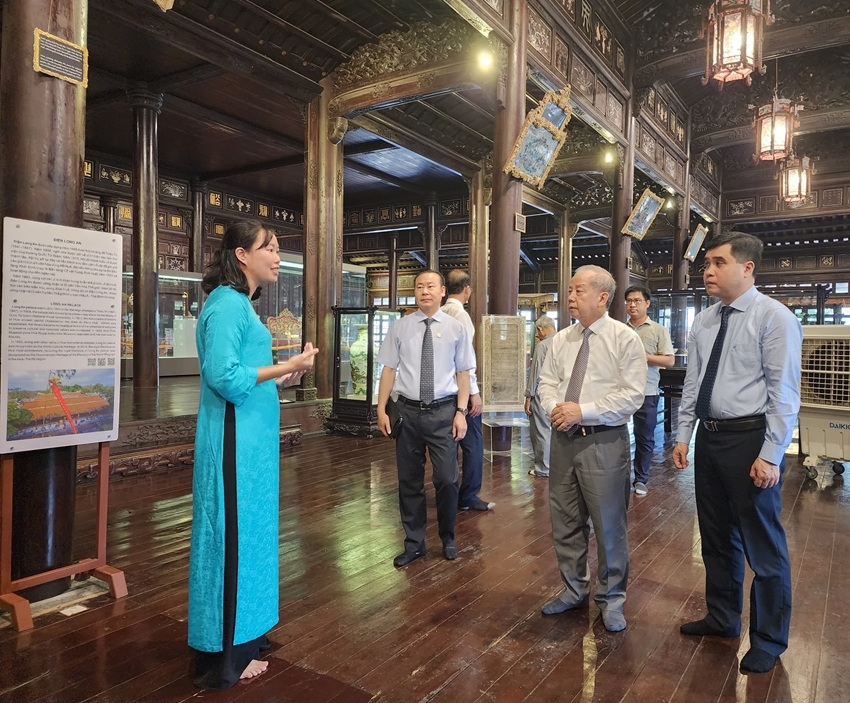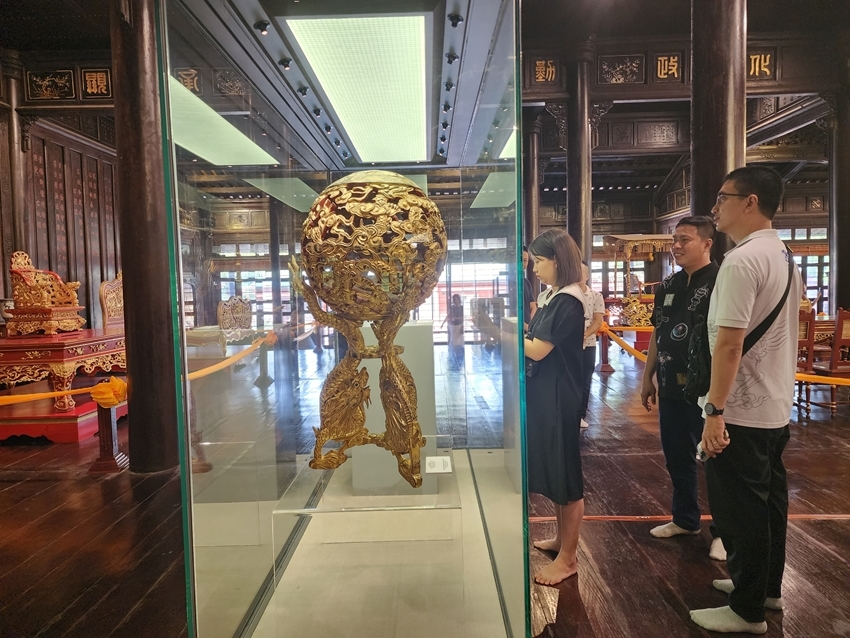 |
| Hue Royal Antiquities Museum is recognized by Topplus as one of the top 10 most visited museums in Vietnam |
For over 100 years of formation and development, from its original name of Musée Khai Dinh - Khai Dinh Museum to the current Hue Royal Antiquities Museum, it has become a cultural destination, a place where the quintessence of the Nguyen Dynasty is preserved.
Hue Royal Antiquities Museum was established in 1923, and is one of the first museums in Vietnam. Being located at 3 Le Truc Street, Hue City, the museum has an area of 6,330 square meters, the main building has an area of 1,185 square meters and a number of outbuildings used as warehouses for storing artifacts and gardens.
Although the museum has changed its name many times, its main building remains the Long An Palace, located within the Bao Dinh Palace, built in 1845 under the reign of Emperor Thieu Tri, and considered to be the most beautiful remaining palace to this day. This is an exquisite architectural work built made of ironwood, in the unique palace architectural art style of Hue. The palace is built in the "trung thiem diep oc" style (meaning “overlapping roofs, interconnected houses”), with 128 columns. The interior and exterior decoration is extremely rich, artistic and very elegant. The roof and ridge of the museum are decorated with the image of "the two dragons fighting for pearls" and the image of "the four sacred creatures: dragon, unicorn, tortoise, and phoenix". Many art researchers have agreed that this is "the most magnificent and beautiful building of all Vietnamese palaces".
 |
| The museum currently preserves many artifacts recognized as National Treasures |
The museum is currently displaying, storing and preserving more than 11,000 artifacts, most of which originated from the Nguyen Dynasty royal court, including collections of porcelain, blue and white enameled porcelain, royal costumes, seals, musical instruments used in royal ceremonies, mirror paintings, lacquered and gilded wooden objects, and holy cannons from the reigns of the Nguyen Lords and the Nguyen Kings. Among these artifacts, 8 artifacts/sets of artifacts with 33 individual artifacts have been recognized by the Prime Minister as National Treasures.
The collections of Hue Royal Antiquities Museum reflect the material life, political rituals, and the ideology of the aristocracy, kings and mandarins of the Nguyen Dynasty, as seen through royal costumes, royal porcelain, worship items, wooden interior decorations, and utensils used in daily life and rituals, made from a variety of materials, such as gold, silver, bronze, bone, ivory, blue and white ceramics, pottery, wood, fabric, and paper.
Notably, the museum also houses the Champa Antiquities Area, which was established under the Decree dated December 26, 1927 of Emperor Khai Dinh to showcase typical works of Champa sculpture over centuries, reflecting the special position of Champa culture in the process of formation and development of the unique values in Hue culture.
Hue Royal Antiquities Museum is a significant building within the complex of monuments, which was recognized by the UNESCO as a World Cultural Heritage in 1993. This is a must-visit destination for those interested in history, especially the Nguyen Dynasty.
